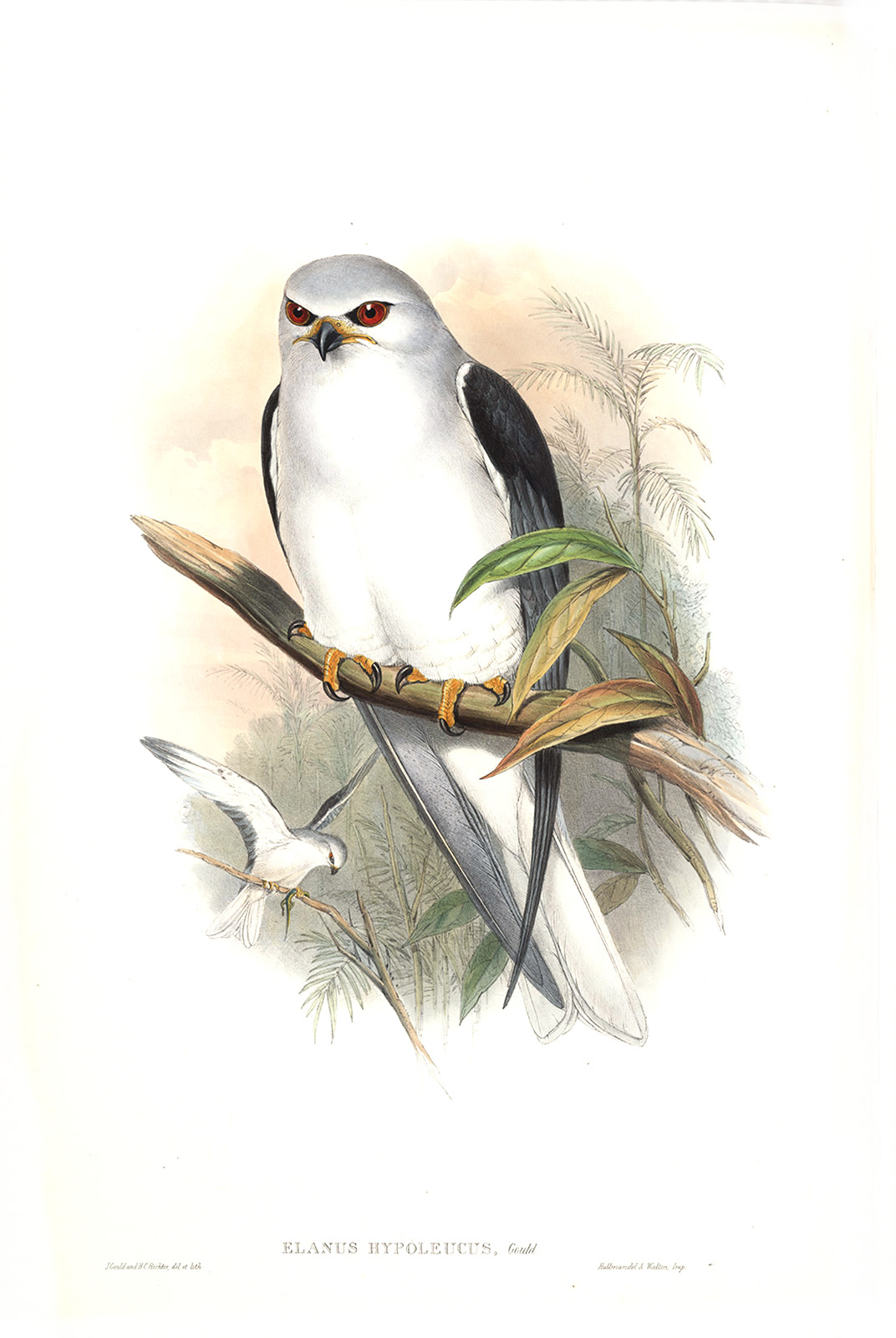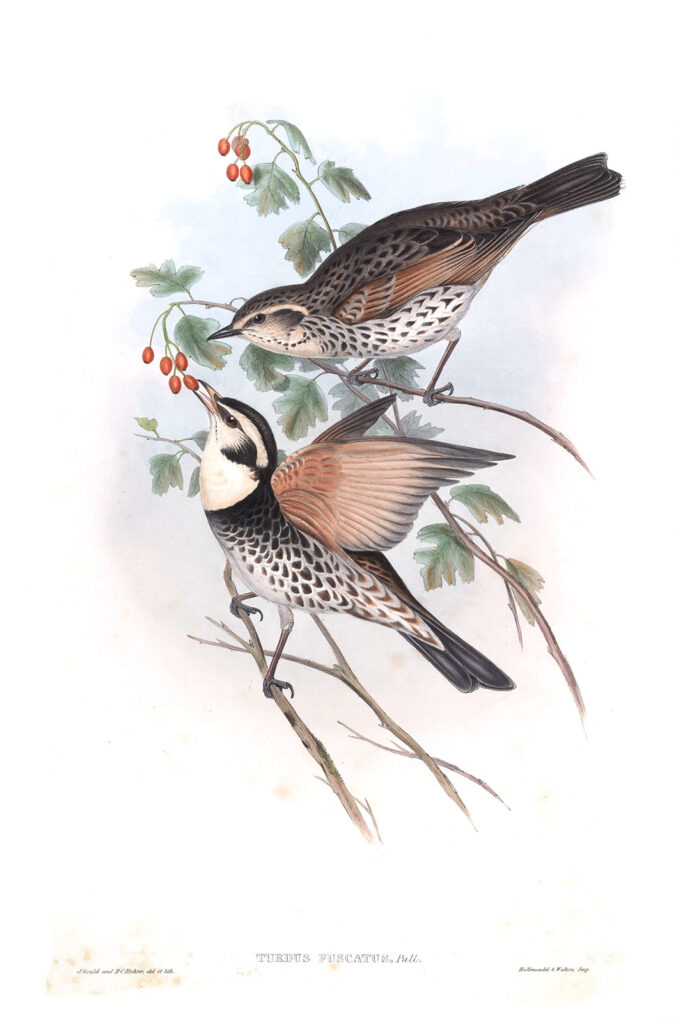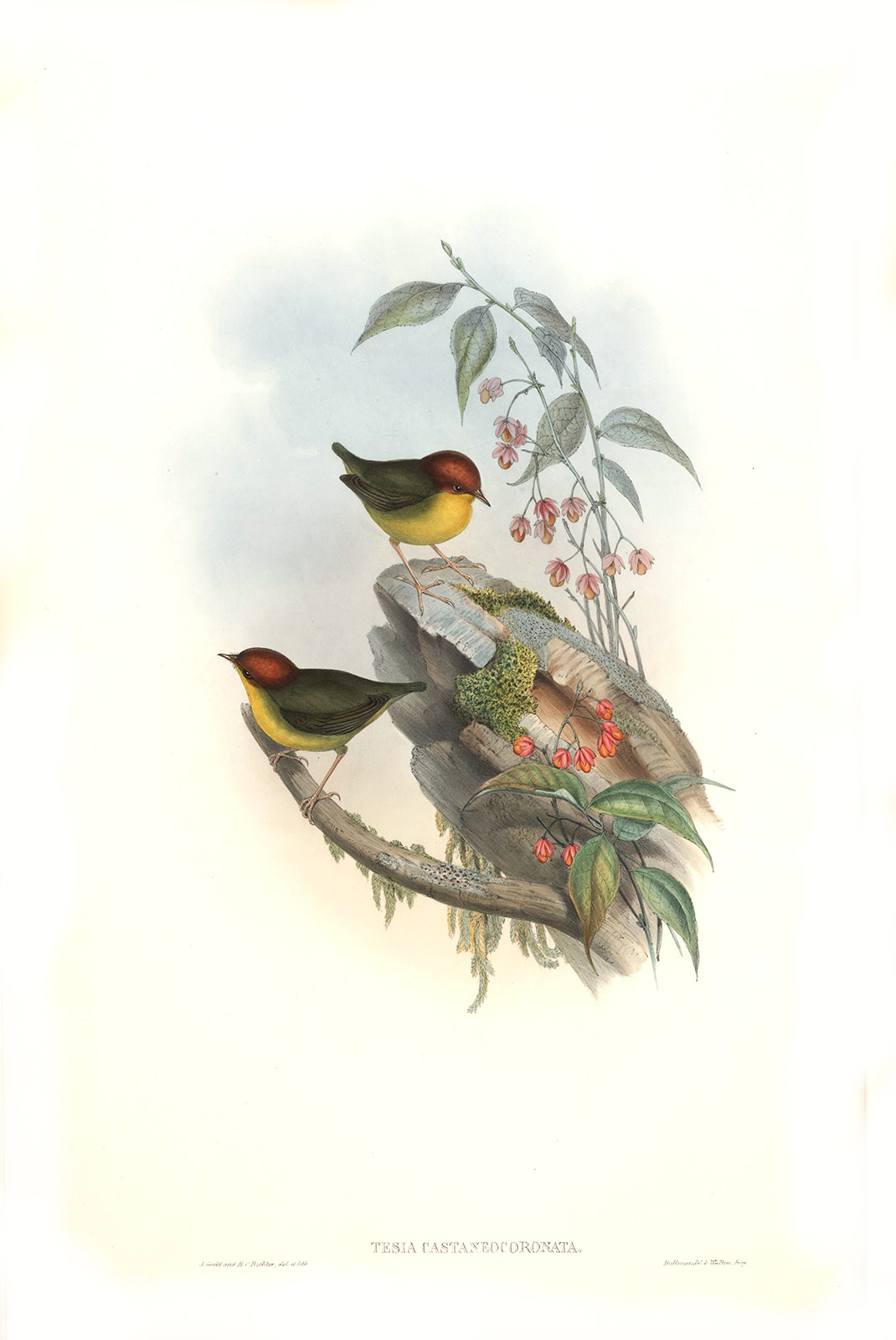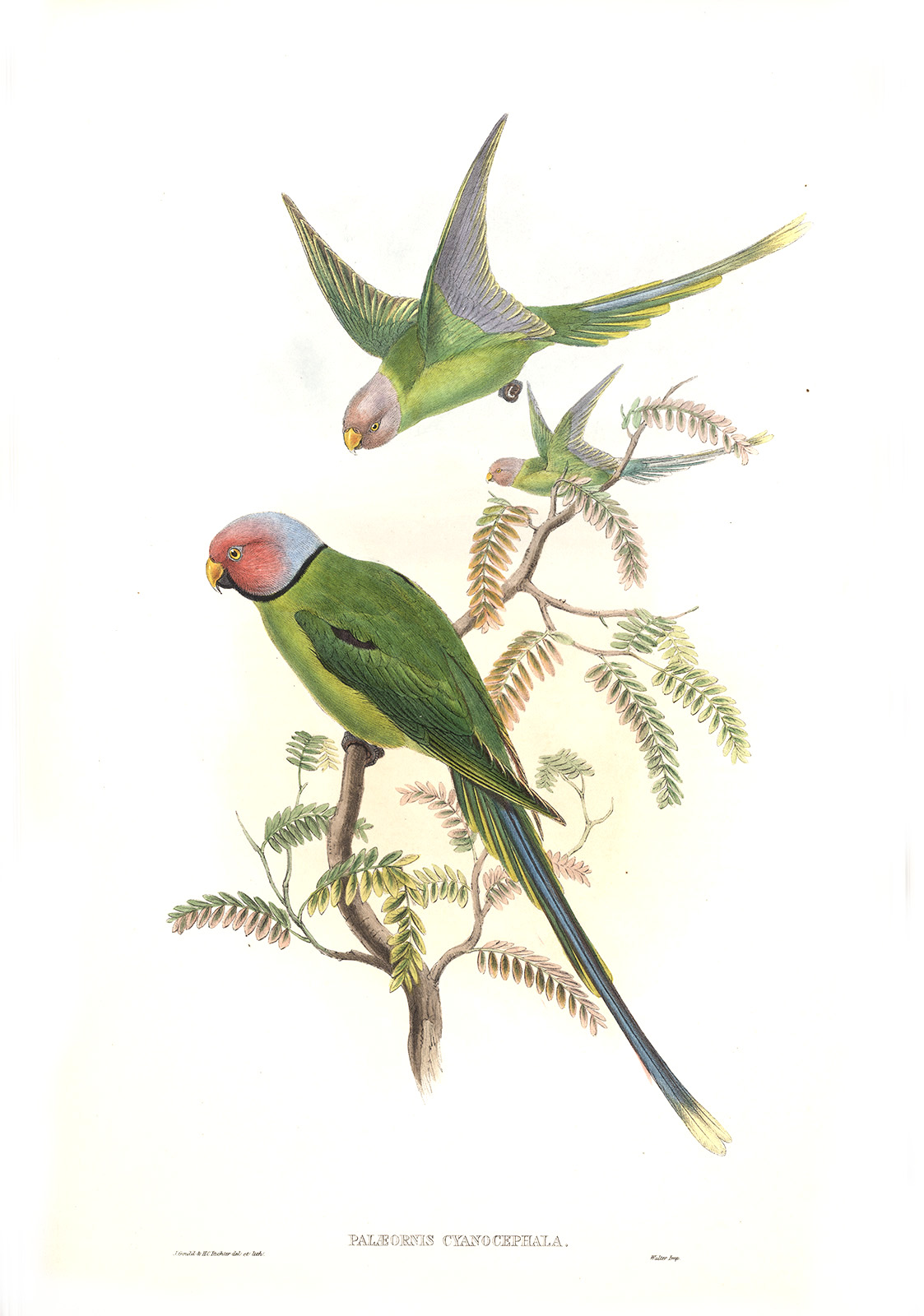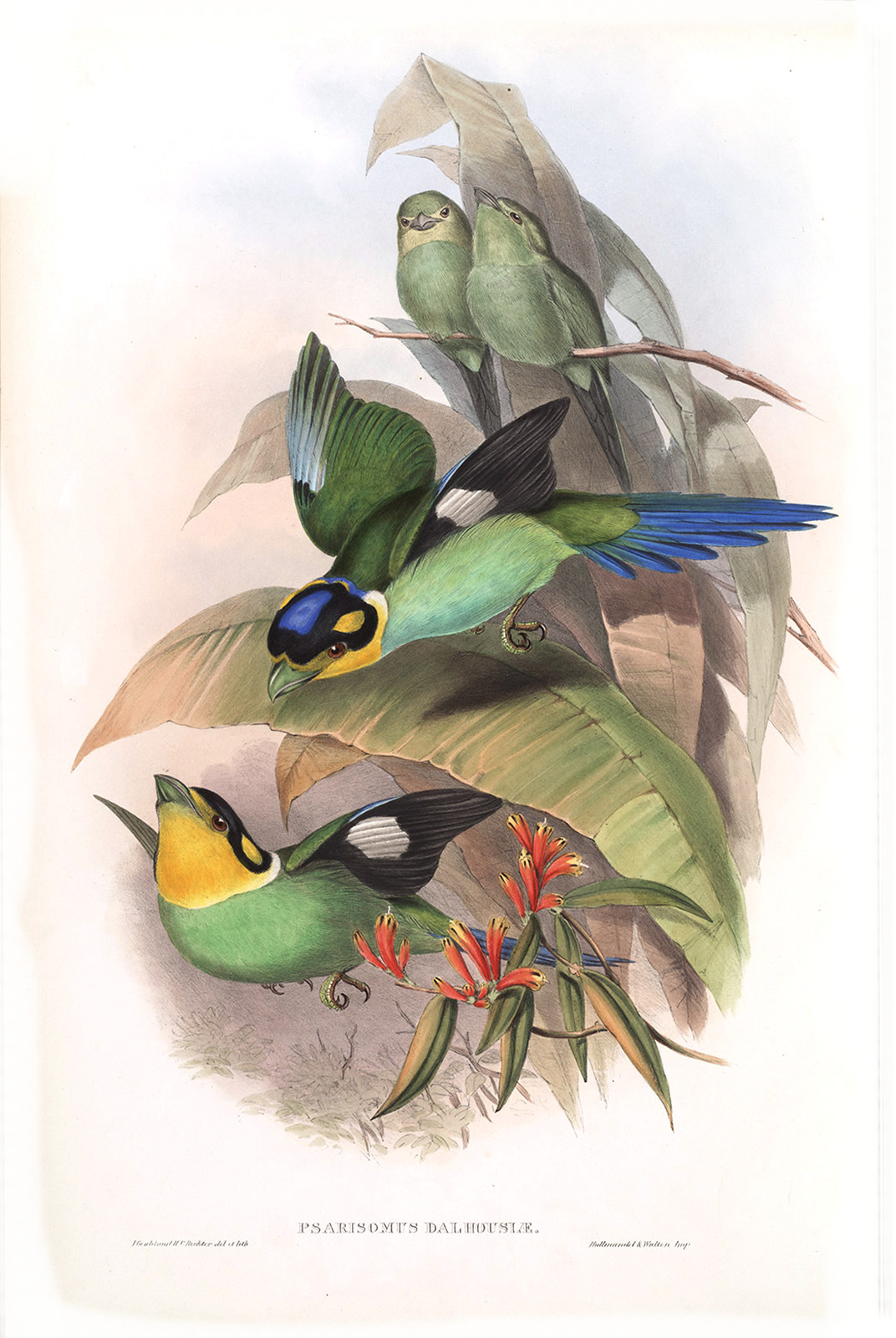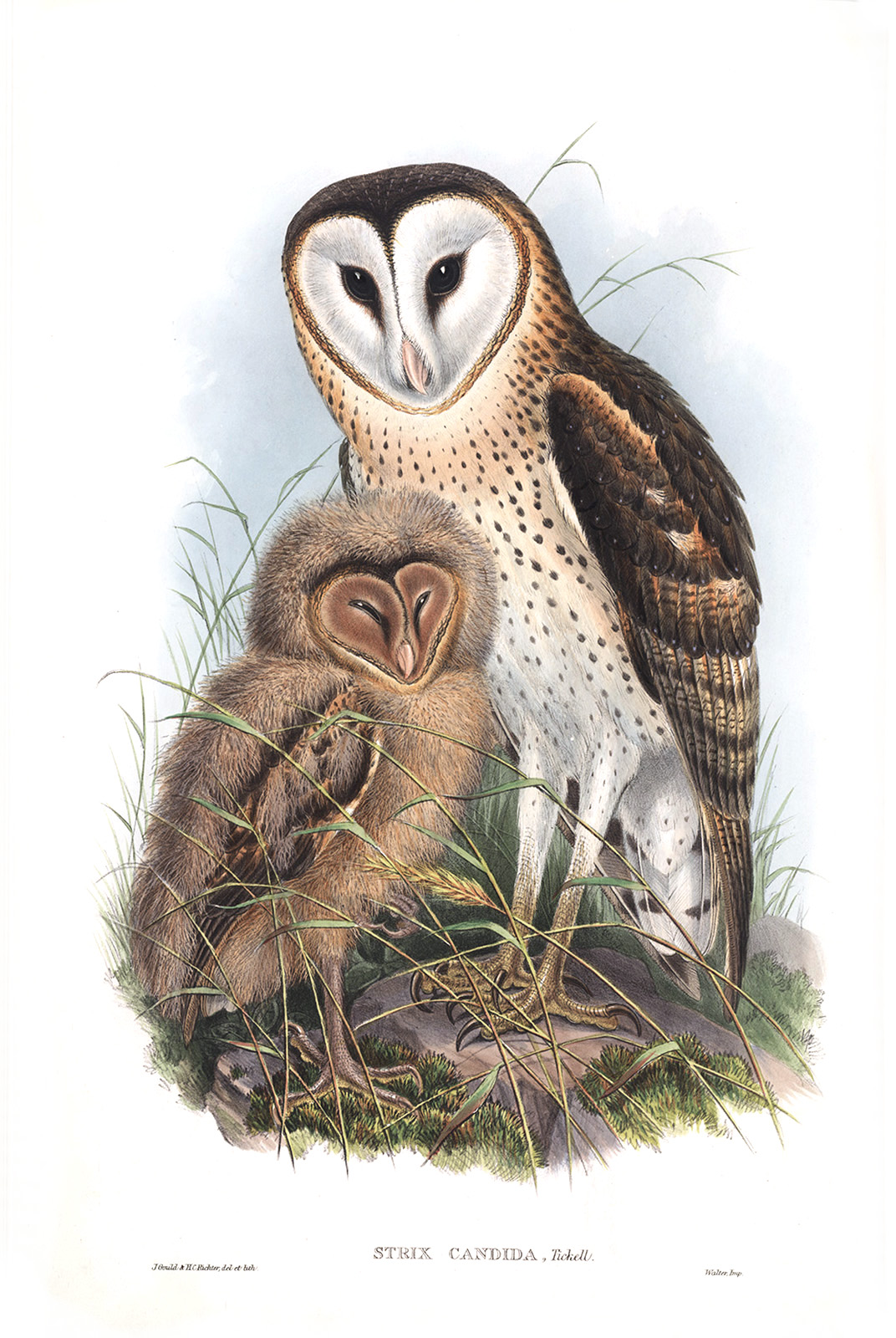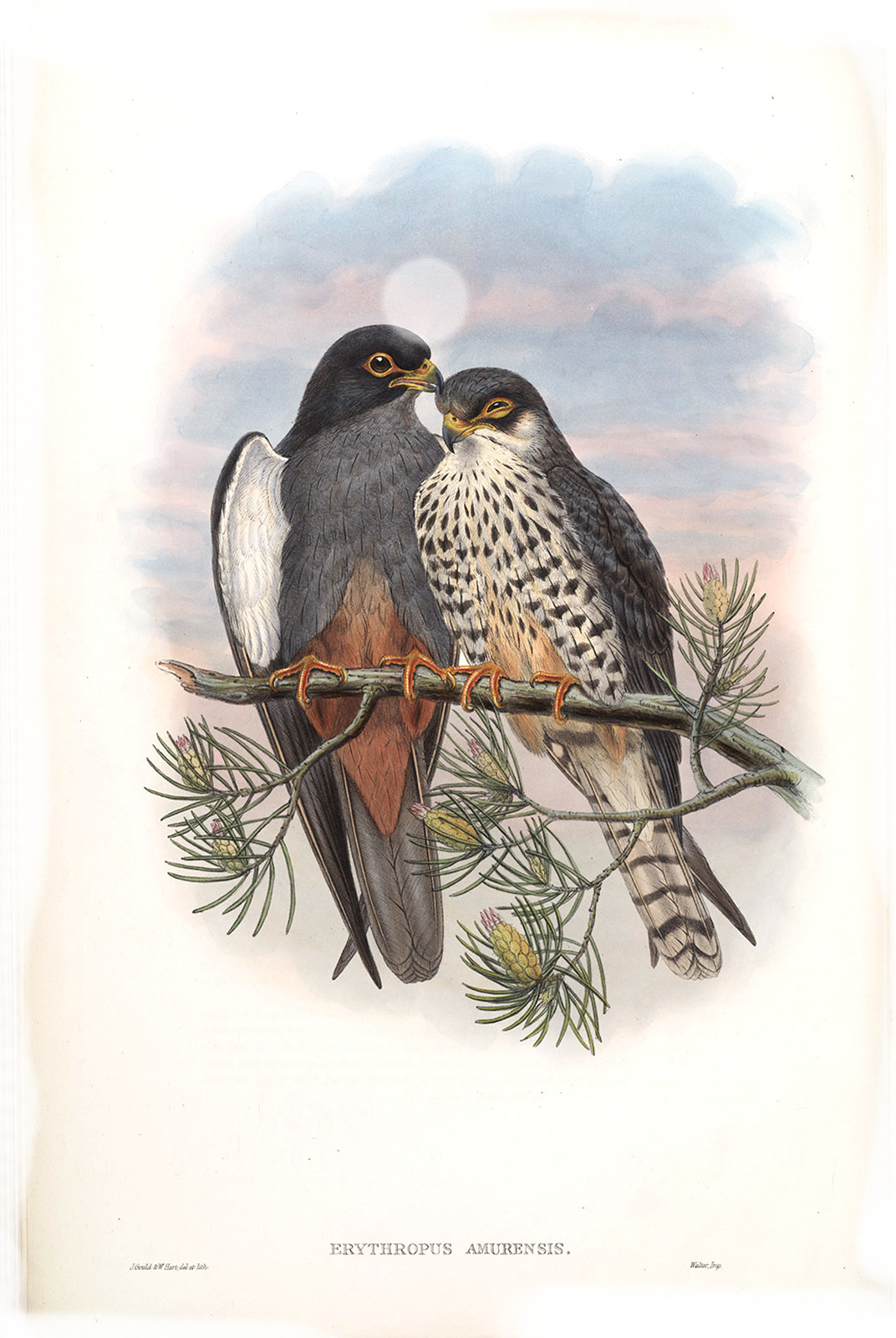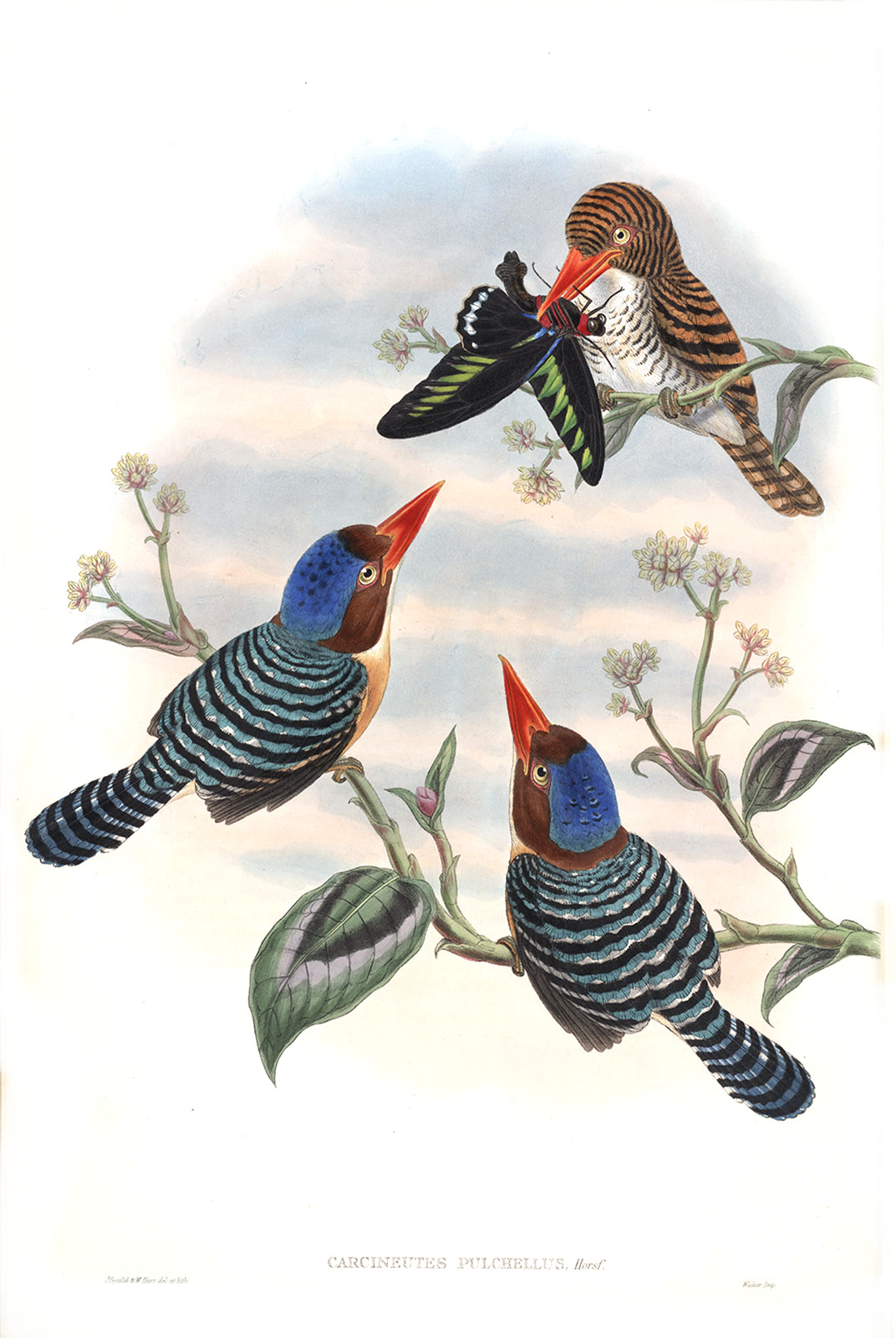The Birds of Asia by John Gould
The Birds of Asia (1875-1888) is regarded as one of John Gould’s greatest works. The collection contains 530 hand-colored lithographed plates by John Gould, Henry Constantine Richter, Joseph Wolf and William Matthew Hart.
The flowers and wildlife of Asia
Gould was fascinated by the diversity of the exotic, colorful species of Asia, and he conveyed his enchantment to viewers, creating one of his most monumental and magnificent sets.
In his sketches he placed many of the overwhelmingly vibrant, showy and elegant birds in settings appropriately lush and detailed. Perhaps more than in any of his other productions, he was careful to create an environment that was extensively delineated and highly accurate. In many of Gould’s other books, the background was subtle or nonexistent, but he was clearly fascinated by the foliage and wildlife of Asia.
The publication is the most comprehensive work on Asian ornithology of that time, covering a huge geographical range. Pictured are trogons, kingfishers, sunbirds, woodpeckers, partridges, parrots, pittas, pheasants and many more.
Gould's print artists
For the preparation of Birds of Asia, Gould’s team of artists was joined by the German-born Joseph Wolf, bringing Gould’s vision to life with detailed compositions showing the birds in their natural environment. Gould was assisted by several artists including Edward Lear, Henry Constantine Richter and William Matthew Hart.
Edward Lear (1812-1888) was born in London and the penultimate of 21 children. He was raised by his eldest sister Ann. Lear was already drawing ‘for bread and cheese’ by the time he was aged 16 and soon developed into a serious ornithological draughtsman. He was the first major bird artist to draw birds from real live birds, instead of skins.
Lear was the pioneering figure in British lithographic art at the time and became Gould’s friend and collaborator. Lithography was becoming more common in Europe, but was relatively unheard in Britain in 1830. The technique of lithography allowed artists to draw directly with ink or crayon on the blocks of fine-grained limestone that served as printing plates. To produce an illustration was therefore faster, easier and much cheaper because the stone could be reused.
Joseph Wolf (1820-1899) was a German artist who specialized in natural history illustration. He would become Gould’s long-term collaborator. Gould admired Wolf and would have liked him on his staff, but Wolf only contributed illustrations on a freelance basis. Wolf thought of Gould as a shrewd and uncouth man. He also noted that Gould lacked a knowledge of feather patterning, apart from knowing nothing about composition, with a tendency to add too much color, claiming that specimens in the wild were brighter.
Henry Constantine Richter (1821-1902) was an English zoological illustrator who produced a very large number of skillful colored lithographs of birds, mainly for the scientific books of John Gould. Gould urgently needed an illustrator, after the death of his wife Elizabeth Gould in 1841, because he had commited to producing various parts of his lavish books on certain dates. The working relation between Richter and Gould lasted for forty years, until Gould died in 1881.
William Matthew Hart (1830-1908) was an Irish-born English bird illustrator and lithographer who mainly worked for Gould. He began working for Gould in 1851, beginning an association that was to last thirty years. By 1970 Hart had become Gould’s chief artist and lithographer.
The publication consists of 7 volumes
Birds of Asia was an overwhelming success, despite the great length of time over which it was produced. It had taken 34 years for the publication of its 35 parts. It was also a stunning feat in that, throughout the four decades of its production, the quality remained outstandingly high. After Gould’s death it was Richard Bowdler Sharpe who completed the publication.
The work in the 35 parts has been arranged in 7 volumes according to the classification adopted by Gould throughout his life.
- Volume 1 includes 76 plates.
- Volume 2 includes 75 plates.
- Volume 3 includes 78 plates.
- Volume 4 includes 72 plates.
- Volume 5 includes 83 plates.
- Volume 6 includes 75 plates.
- Volume 7 includes 71 plates.
Teylers Museum
Taken from the original illustrations in the libraries of Teylers Museum in the Netherlands, the collection The Birds of Asia (1875-1888) contains 530 prints after the hand-colored originals.


